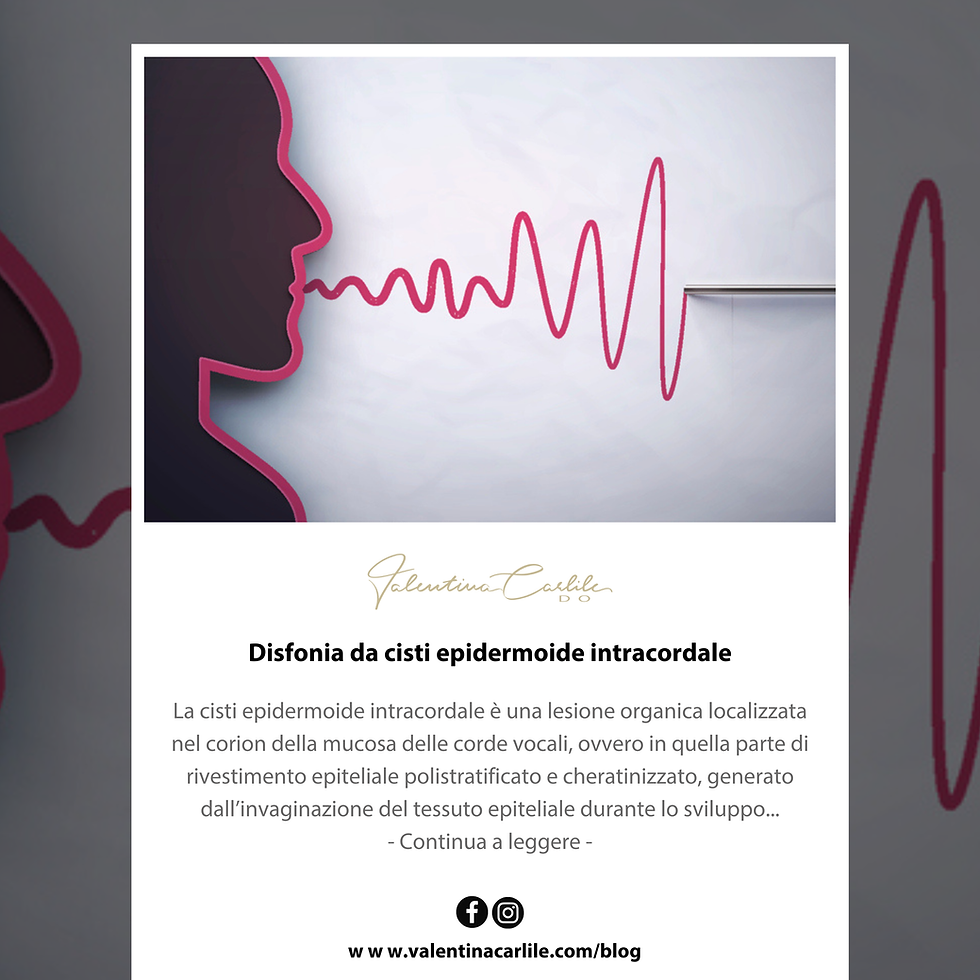Osteopathy and Voice: Fundamentals of vocal production, physical biomechanics
- Valentina Carlile DO

- Jan 7, 2016
- 2 min read

One of the main physiological functions of the vocal folds is the regulation of air flow, a function in which the two vocal folds are seen to act as a valve that regulates the flow of air during breathing. Another fundamental function is the protection of the respiratory tract from external particles. The third function is that of vocal production, which manifests itself through self-sustained oscillations at high frequency and small amplitude.
At a physical biomechanical level, the theory that is universally accepted is the one that presents the Van den Berg aerodynamic myelastic model.
This theory explains the influence of the larynx, trachea, and vocal cavities, and their interaction, in composing a sound generator.
The modal frequency of the vocal folds which defines the F0 (fundamental frequency) is controlled by the effective tension of the covering layer (cover body), according to the covering layer theory. A first law defines F0 as follows:
F0 = (1/2L) √(σ/ρ)
Where L is the length of the vocal cord, σ is the longitudinal tension, and ρ is the tissue density.
The equation shows the direct correlation between F0 and fabric tension or proportionally, the elastic modulus.
During normal speech F0 varies between 60-200Hz in males and between 160-300Hz in females.
The contraction of the thyroarytenoid and cricothyroid muscles controls the F0 parameter. Increased cricothyroid activity raises F0, while increased thyroarytenoid activity can both lower and raise. The contraction of the thyroarytenoid muscle in fact lowers the note through thick superficial layers. A fast vocal passage, on the other hand, is related to the amplitude of the vibrations of the vocal cords.
The lamina propria of the vocal fold mucosa contributes to the propagation of waves during phonation. The speed of wave propagation and the phase difference between the lower and upper portions depend on F0.





Comments